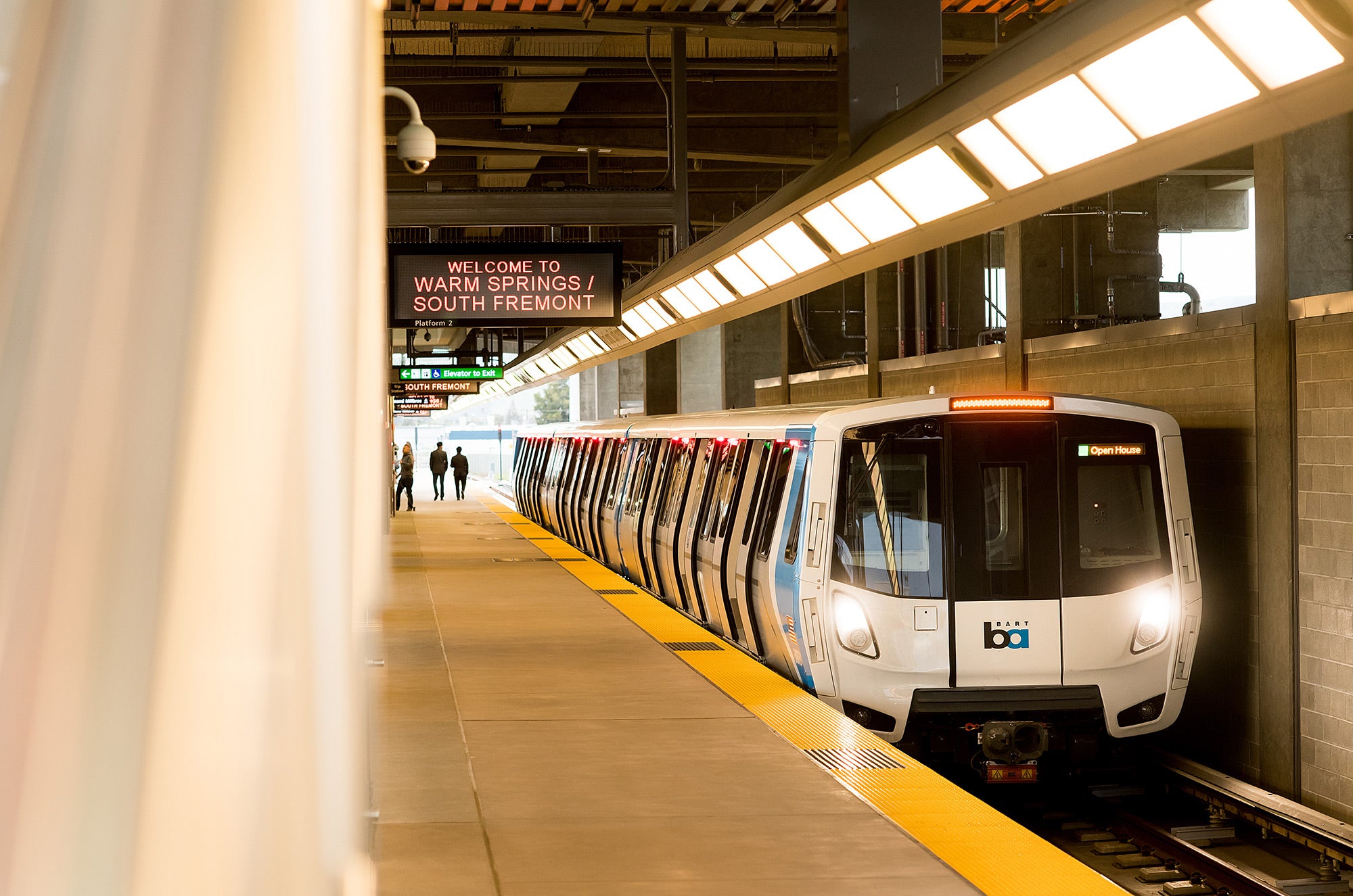 |
| Warm Springs/South Fremont BART station |
In the past, before the BART Silicon Valley Extension Project began, transit service connecting the Fremont BART station with the Silicon Valley was provided through Valley Transportation Authority (VTA) routes 120, 140, 160, 180, and 181. They used the highways 680, 880, and 237 to connect Fremont BART with various other locations in the Santa Clara County area.
But in the long term, demand for a one-seat ride from Alameda County into the Silicon Valley has risen, necessitating the BART Silicon Valley Extension Project. Thanks to federal funding, the project has been rolling forward. As of April 2017 BART opened a new station, Warm Springs/South Fremont Station, located ~4 miles south of the original southern terminus. And BART continues testing further, onwards towards Berryessa Station, located between Berryessa and Mabury Roads in San Jose, CA. That was the main focus of this article- that BART is now starting to operate trains between Fremont and Berryessa station, running at various speeds between 5 and 80 mph to ensure the proper operation of train components on the new track.
 |
| traffic on the Interstate 880 southbound approaching 237 junction (Milpitas, CA) |
And you may ask-- why should I care about BART extension? Right now the 680, 880, and 237 corridors are gridlocked during commute hour. Spending hours locked in traffic not only adds extra additional carbon dioxide emission to the environment, but also makes drivers fatigued and stressed. Time is money, and time wasted sitting in traffic is money lost to the American economy. Not only that, a full 10-car BART train can carry some 200-300 people at standard capacity (standing room only). During commute hour, I would estimate a single BART train to carry some 400-600 riders. Imagine 400-600 additional cars on the highway, adding to the gridlock. And did I mention that the Silicon Valley is expanding so even more cars are now trying to get there?
Thank God we have BART.
Read more here:
Berryessa Extension Testing
BART Silicon Valley Extension Project
Discussion Questions:
1. What other practical advantages does setting up the BART Silicon Valley extension provide?
2. List some potential barriers that might discourage the public from riding BART. What can we do to address and eliminate these barriers?
3 comments:
I love public transportation. It's a great resource, especially since I don't drive. I have noticed the crazy amount of traffic in the Bay Area. Driving on 101 often feels like we're stuck in LA traffic. One reason why the LA area has so much traffic is because they lack an effective public transportation network. With an expanding Silicon Valley, it's become more essential for the Bay to keep up with its train systems. Even thought there's a demand for more stations to be added to BART, I wonder when people will begin to push back against it. Residents may question where BART will run through and where the station will be. Nobody wants a station in their backyard. BART is on a roll of expanding its reach, but I just wonder when people will think it has gone too far. Also, will BART and Caltrain eventually link in San Jose?
Excellent point Tori! Actually, the construction of the new underground tunnels leading to Berryessa station have been equipped with new vibration and sound absorbing technology to minimize noise disturbance of local residents living in San Jose. In addition, generally speaking, BART rarely if ever operates on local streets. A large majority of the BART system is either underground, largely above ground, or in the median of highways such as the 580. With trains like Caltrain, federal law mandates that the trains blow their horn at 80 decibels in order to warn pedestrians and vehicles at railroad crossings. And yes, Caltrain and BART will eventually line up at the Santa Clara and San Jose Diridon stations.
I agree with Tori, and I think public transport is a great resource. If you don't have a car, you don't have to force your parents to drive you everywhere. However, I don't really love riding BART just because it isn't very clean, and the stations are pretty dirty. Also, there are ALWAYS delays, especially in the east bay. I rode it in May from Millbrae to Downtown Oakland, and there were 3 times the train stopped and couldn't go to the station because of "police activity". Yes, it is significantly faster than driving in traffic, but these issues often deter people from riding it. Additionally, people here in the Bay Area do not rely on public transportation, so it will be hard to change the culture of riding public transit rather than driving. In places like Hong Kong, the system of public transit is very high tech, and it hits literally every single place you would ever want to go to, and it is very simple and easy to ride. If the system here is improved and more efficient, I personally would take Bart or Caltrain more often.
Post a Comment